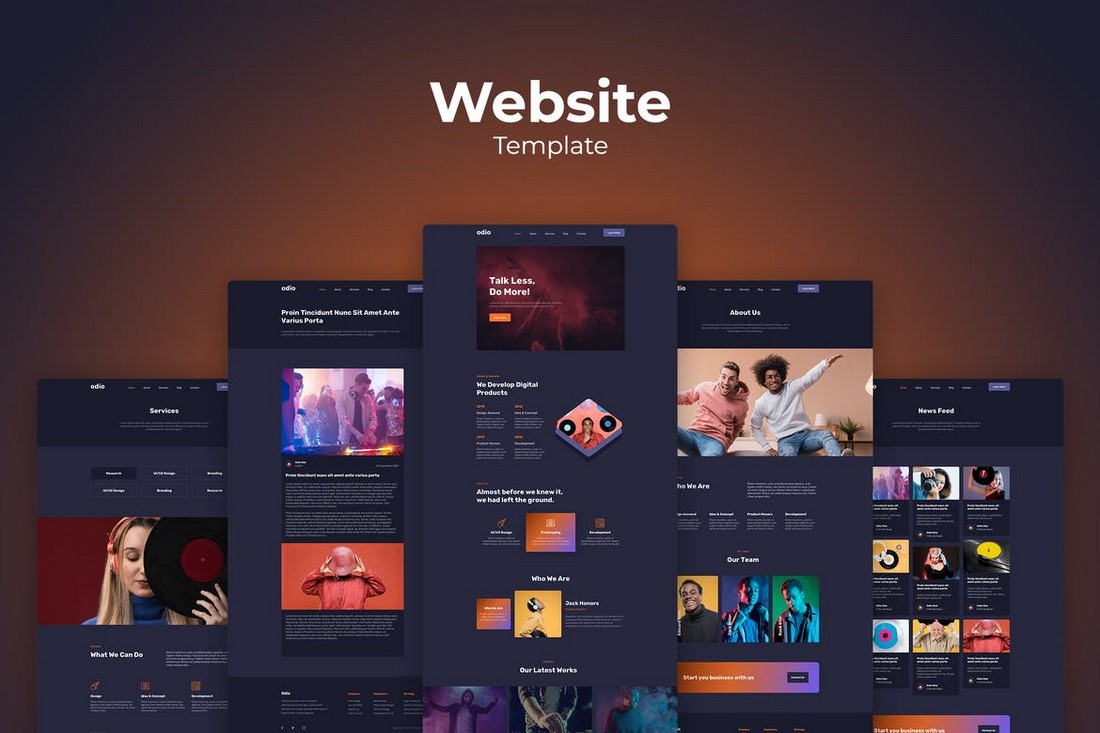In technological age, having a robust internet presence is more important than ever for companies looking to thrive and grow. Your site typically acts as the primary contact for your interaction with potential clients, making superior digital design a vital element in driving success. A effectively designed platform not just secures focus but keeps it engaged, guiding visitors effortlessly through their internet navigation and prompting them to take action.
Investing in high-quality web design can greatly influence your company. It mirrors your branding, communicates your values, and affects customer views. With the right web design strategies, you can create a navigable experience that enhances engagement and raises conversion rates. Let us delve into how exceptional website design can be the key to unlocking your enterprise's maximum potential.
The Value of User Experience
User experience plays an essential role in the success of a website, actively influencing how visitors interact with your business. A well-designed website addresses the needs and preferences of its users, ensuring that navigation is user-friendly and engaging. When users easily to explore your site, they are more likely to remain longer, take in your content, and ultimately become into customers. Conversely, a poor user experience can lead to high bounce rates, lost opportunities, and poor perceptions of your business.
Creating an attractive user experience goes beyond aesthetics; it encompasses functionality and accessibility. Elements such as adaptive design, fast loading times, and clear CTAs contribute to a smooth experience that keeps users engaged. By emphasizing these aspects in your web design, you create an atmosphere where visitors feel comfortable exploring your offerings. This familiarity translates into trust, which is crucial for fostering customer loyalty and encouraging repeat visits.
In addition, a focus on user experience can yield important insights into customer behavior. By analyzing how users interact with your website, you can spot areas for improvement and optimize your design as needed. This ongoing process not only enhances user satisfaction but also aligns your web design with company aims, ultimately driving success. Emphasizing jw-digital.co.uk in your web design strategy is a vital step toward cultivating a favorable impression of your brand in the digital landscape.
Key Elements of Successful Web Design
Successful web design begins with a simple and intuitive layout that guides users seamlessly through the site. A well-structured navigation menu allows visitors to find information easily and quickly, reducing frustration and increasing the likelihood of them staying longer on the site. Prioritizing a logical flow of content ensures that users can access the crucial details without confusion, leading to a favorable experience.
Visual elements play a pivotal role in web design. This includes using high-quality images, engaging graphics, and a cohesive color scheme that aligns with the business's identity. Optimal use of typography is also important; choosing fonts that are legible and aesthetically pleasing enhances readability and helps convey the business's message. All visual components should work together to create an appealing environment that draws users in and keeps them engaged.
Lastly, adaptability and speed are critical factors in effective web design. With the increasing use of mobile devices, websites must adapt to different screen sizes without sacrificing functionality. A responsive design not only improves user satisfaction but also boosts search engine rankings. Quick loading times are equally important; users are less likely to stay on a site that takes too many seconds to load. By focusing on these elements, businesses can create a website that not only looks excellent but also drives success.
Assessing the Influence of Web Design on Corporate Achievement
Assessing the efficacy of website design in business starts with essential metrics. Metrics such as conversion rates, abandonment rates, and average time spent on site provide valuable insights into user engagement. Increased conversion rates indicate that the layout is efficiently directing visitors toward desired actions, while a reduced abandonment rate suggests that users regard the content applicable and interesting. These measures serve as a basic assessment of how well a site is performing in relation to its aesthetic.
Customer feedback is another vital element in assessing the impact of web design. Carrying out surveys and usability tests can reveal users' perceptions and encounters when using a site. This qualitative data helps organizations grasp what design features appeal with their audience and which areas may need improvement. By proactively seeking input from users, businesses can modify and optimize their web design to meet customer expectations, ultimately fostering success.
Lastly, studying the relationship between website design improvements and corporate results can provide a clearer picture of impact. Tracking sales growth, lead generation, or customer retention before and after instating layout modifications can highlight the efficacy of web design strategies. A well-organized website not only brings in visitors but also holds them, contributing to long-term business goals and achievement. By regularly measuring and improving web design, businesses can ensure they are meeting the evolving needs of their customers.

